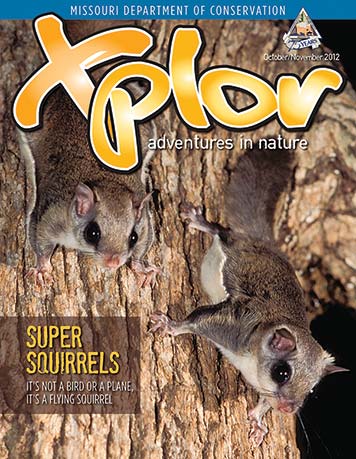This Halloween, you might see make-believe zombies lumbering around seeking tricksand- treats. These costumed creatures won’t eat your flesh or hijack your brain—that only happens in scary, made-up movies. For some animals, though, zombies are all too real.
Flight of the living dead
In the blink of an eye, a tiny, fiendish fly lands on a honeybee, stabs its blade-sharp bottom into the bee’s back, and injects dozens of eggs. The honeybee is dead at this point—it just doesn’t know it. The eggs hatch into zombie-like maggots that begin devouring the bee from the inside out. To keep their meal alive as long as possible, the maggots munch unimportant organs first. Eventually, though, they arrive at the bee’s brain and chow down, causing the bee to lose control of its own body. It bumbles from its hive in a daze—usually at night—and flies toward a light. Soon after, the bee goes belly-up, and the maggots squirm out of its neck to begin turning into adult flies.
The great brain robbery
For most of its life, a spiny-headed worm uses its nightmarish mouthparts to suck food from a pill bug’s intestines. But when the worm wants to lay eggs, it hijacks the pill bug’s brain, causing the bug to defy its instincts and crawl into bright, sunlit areas. There, the pill bug stands out like a neon sign blinking “eat me,” and starlings are happy to oblige. The worm’s eggs pass through the starling and get plastered on plants in the bird’s droppings. If a pill bug eats the plants, the sinister cycle starts again.
Invasion of the Body Hatchers
A braconid wasp is a cabbageworm’s worst nightmare. The tiny wasp injects eggs inside a doomed caterpillar using a dagger-like appendage called an ovipositor. To protect the little wasps-to-be, the eggs are coated with a virus that turns off the caterpillar’s immune system. The virus also has other, creepier consequences.
Once the eggs hatch, the rice-sized baby wasps, called larvae, feast on the cabbageworm’s blood and fluids. To keep their squirming nursery alive, the larvae avoid eating the cabbageworm’s vital organs. When the larvae grow large enough, they use saw-like teeth to slice open the caterpillar’s tough skin. Then they wiggle out and spin silken cocoons around themselves. Unfortunately, this isn’t the end for the unlucky caterpillar.
The virus that protected the wasp eggs now invades the caterpillar’s brain, turning the worm into a zombie bodyguard. The caterpillar weaves its own silk over the wasp cocoons, giving them an extra blanket of protection. Then the worm quits eating and stands guard, protecting the cocoons from wasp-eating insects until the caterpillar eventually starves.
Spawn of the dead
Horsehair worms appear in late summer in streams, ponds and swimming pools. The creepy creatures writhe about underwater, twisting themselves into squiggly knots. The ghoulish part, though, is how they get underwater in the first place. Female worms lay millions of eggs that hatch into tiny larvae. Some larvae get eaten by insects, such as dragonflies, that live in water as babies but on land as adults. An eaten larva isn’t digested; it simply lurks inside the insect, waiting for it to die. If a cricket eats the infested corpse, the larva goes into zombie mode. It begins devouring the cricket’s guts, growing longer as it feasts.
Crickets swim about as well as concrete garden gnomes, so they normally avoid water at all costs. But horsehair worms pull a zombielike trick on the crickets they infect.
For reasons not understood, infected crickets feel compelled to jump into any water they find. Once there, the horsehair worm bursts from the cricket’s body and squirms away, leaving the half-eaten insect to drown.
And More...
This Issue's Staff
Les Fortenberry
Karen Hudson
Regina Knauer
Noppadol Paothong
Marci Porter
Mark Raithel
Laura Scheuler
Matt Seek
Tim Smith
David Stonner
Nichole LeClair Terrill
Stephanie Thurber
Cliff White






















